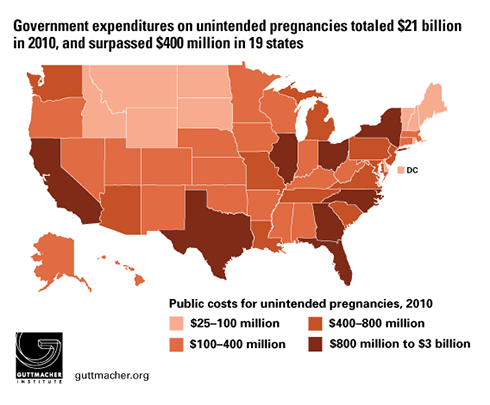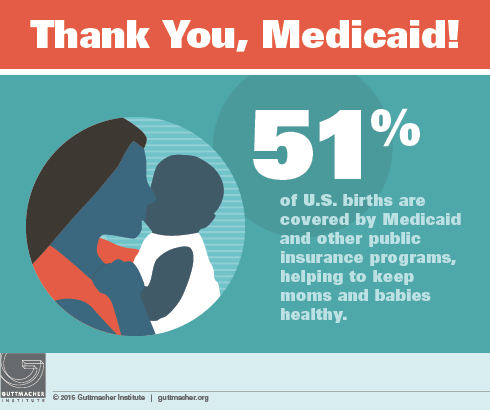U.S. government expenditures on births, abortions and miscarriages resulting from unintended pregnancies nationwide totaled $21 billion in 2010, according to "Public Costs from Unintended Pregnancies and the Role of Public Insurance Programs in Paying for Pregnancy-Related Care: National and State Estimates for 2010," by Adam Sonfield and Kathryn Kost. In 19 states, public expenditures related to unintended pregnancies exceeded $400 million in 2010. Texas spent the most ($2.9 billion), followed by California ($1.8 billion), New York ($1.5 billion) and Florida ($1.3 billion); those four states are also the nation’s most populous.

Previous research has demonstrated that investing in publicly funded family planning services enables women to avoid unwanted pregnancies and space wanted ones, which is good not only for women and families, but also for society as a whole. In the absence of the current U.S. publicly funded family planning effort, the public costs of unintended pregnancies in 2010 would have been 75% higher.
Sonfield and Kost report that the total gross savings from averting all unintended pregnancies in 2010 would have been $15.5 billion. This is less than the total public cost of all unintended pregnancies, because even if all women had been able to time their pregnancies as they wanted, some still would have had planned births that were publicly funded. These potential savings do not account for the cost of providing family planning services and other interventions that might be required to prevent the unintended pregnancies.
"Reducing public expenditures related to unintended pregnancies requires substantial new public investments in family planning services," says Sonfield. "That would mean strengthening existing programs, such as the Title X family planning program, as well as working to ensure that the Affordable Care Act achieves its full potential to bolster Medicaid and other safety-net programs. We know we can prevent unintended pregnancies and the related costs. There are public programs in place that do it already, but as these data show, there is significantly more progress to be made."
The new research also highlights the central role played by Medicaid and other public insurance programs in providing critical pregnancy-related care—including prenatal care, labor and delivery, postpartum care and infant care—that help keep women and babies healthy. Fifty-one percent of the four million births in the United States in 2010 were publicly funded, including 68% of unplanned births and 38% of planned births.
"These findings demonstrate the continuing importance of Medicaid and other public health insurance programs in preserving maternal and child health, and in supporting pregnancy-related care," says Adam Sonfield, coauthor of the new report.
